By Cassia Kisshauer, Senior Reference Services Librarian
Seize Der Tog!: The Yiddish Press in America

The Yiddish press in America got its start in the late 19th century. By the 1910s, publications were flourishing and represented a wide variety of Jewish religious and political perspectives. Newspapers served as critical sites of information, entertainment, and learning. They provided access to local and national news in Yiddish, as well as education for immigrants on the cultural norms of a new country.
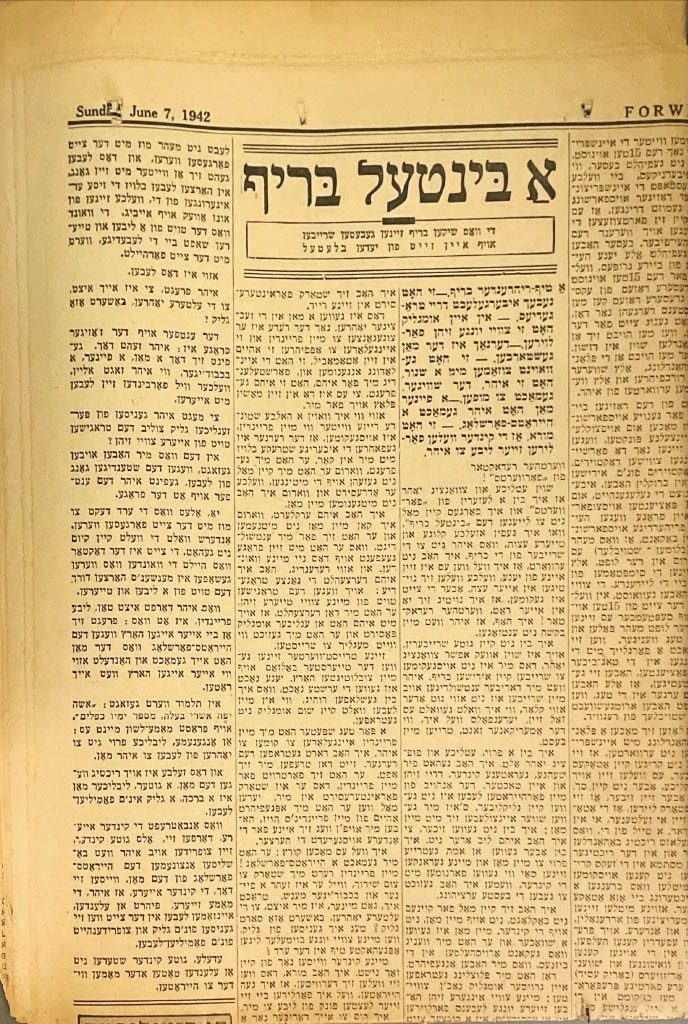
The Forverts (The Forward) was founded as a socialist daily newspaper in 1897. One of the its most popular features, the advice column “Bintel Brief” (Bundle of Letters), began in January 1906 [see column above]. Editor Abraham Cahan highlighted a human-interest angle and created mass appeal by printing readers’ queries and staff responses. It has provided insight to Jewish life in America over the last century, reflecting changing concerns of readers through time and across the country. Today it is published as an online advice column and podcast. Rather than the handwritten letters of previous decades [see below], readers are now encouraged to email their questions and personal dilemmas.
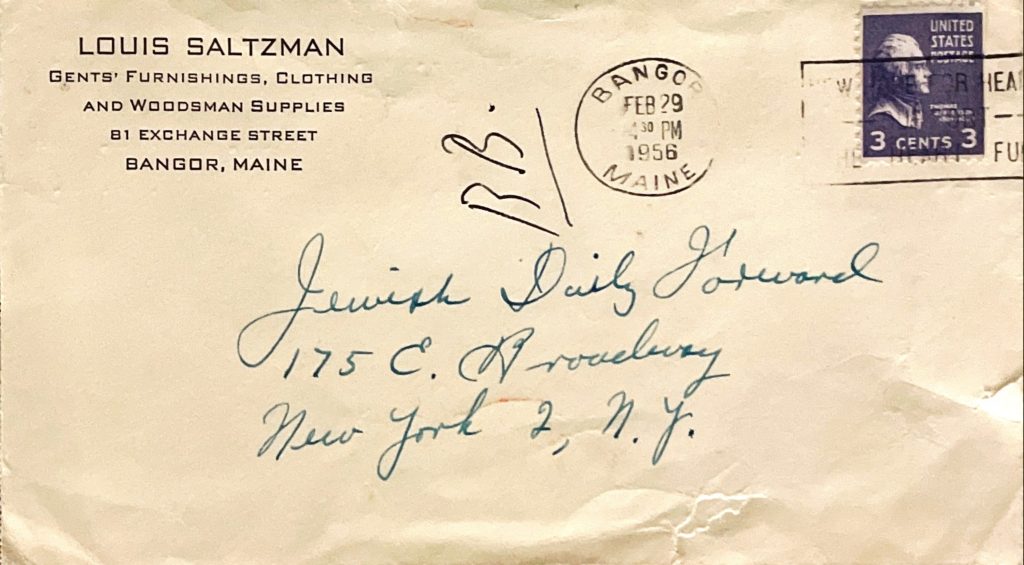
Writers and editors were positioned as authorities on issues including politics, religion, labor, and domestic life. Advice columns walked a fine line between entertainment and practical advice on topics from finding romance to locating social welfare assistance. New York readers visited the Forverts offices [see below] so often for information and advice, they established staffed office hours to meet demand.
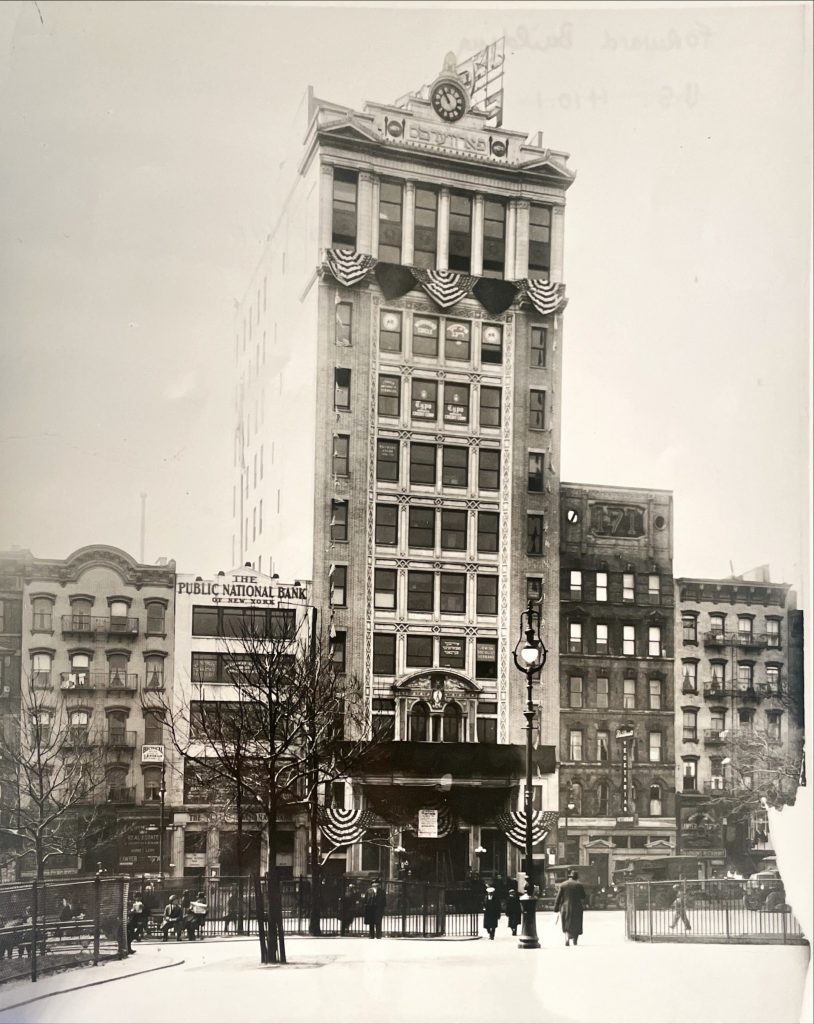
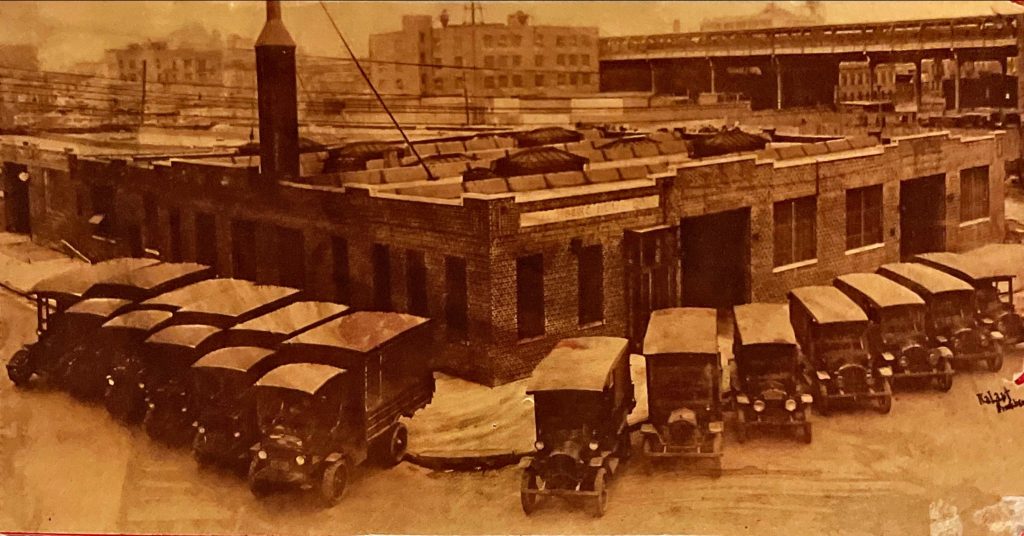
Above, trucks are parked around the building of the Weinberg News Company, a Brooklyn wholesale distributor that delivered the Forverts to newspaper dealers. In New York, readers could rely on easy access to Yiddish papers for their news on the go. Below, Mayor Fiorello LaGuardia looks at Yiddish daily Der Tog with the headline “Invasion Begun” on D-Day.
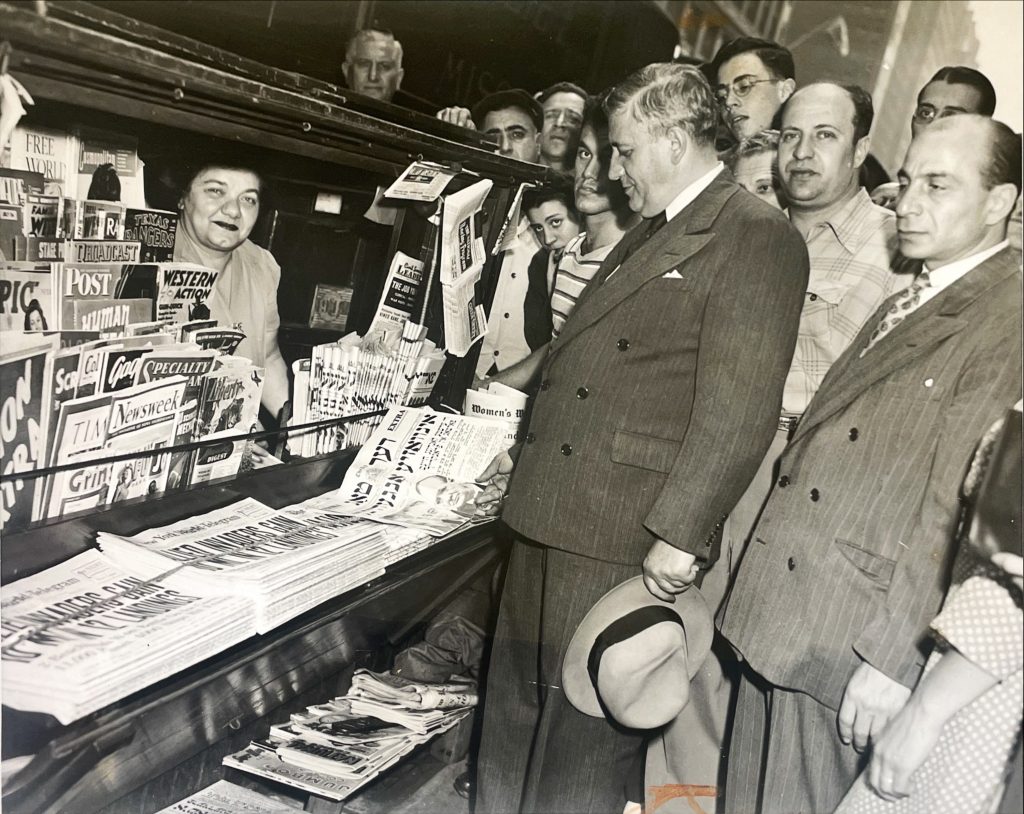
Although New York was a center for the Yiddish press, Yiddish news was printed across the country. Large cities with significant Jewish populations such as Chicago had their own publications. Below, staff of the Idishe Velt pose in a local printing plant in Philadelphia. The Forward also had regional offices and editions in cities including Detroit and Boston [see Boston office, below] to address local concerns.
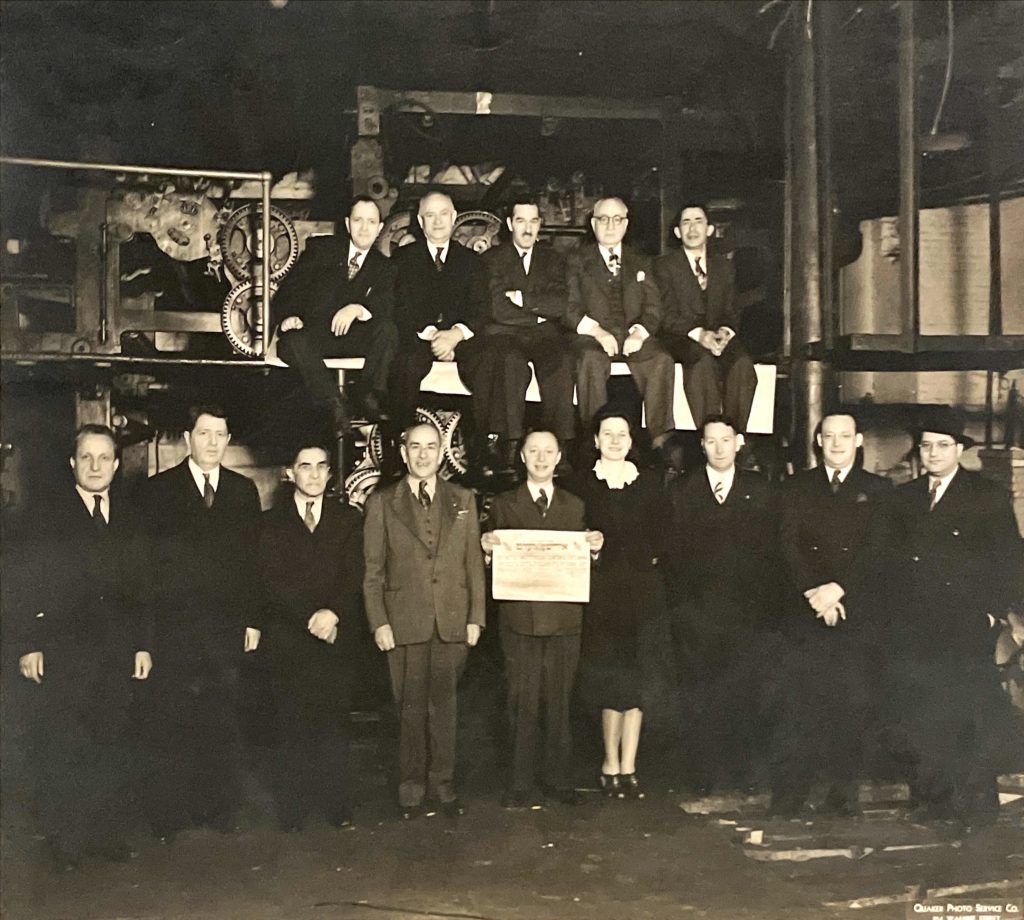
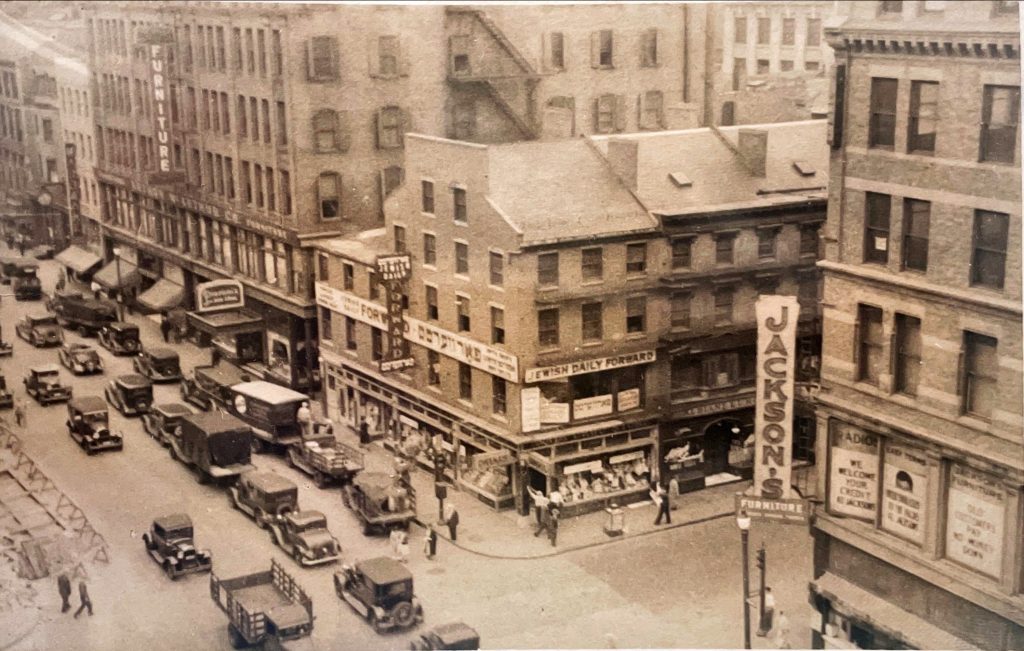
Access to Jewish news also offered a lifeline for subscribers in smaller communities, particularly remote parts of the South and Midwest. Subscribers in smaller towns could feel more connected to Jewish community and correspond with editors or other readers. By reading the same material, Jews across classes, observance levels, and regional backgrounds developed shared interests.
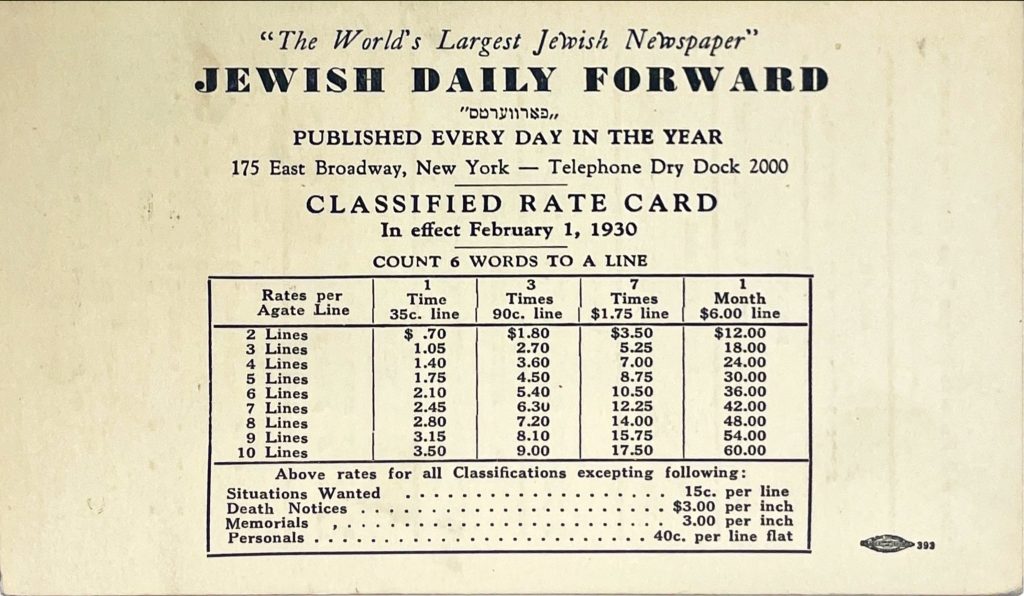
Classifieds and commercial advertising helped boost sales and shape content [see rate card, above]. Some readers bought papers, especially morning dailies, not for columns but for job listings. As newspapers shifted to a reliance on ads, they reconsidered their audience. Viewing women as potential readers and primary household shoppers, papers diversified to include content written by and targeted to women.
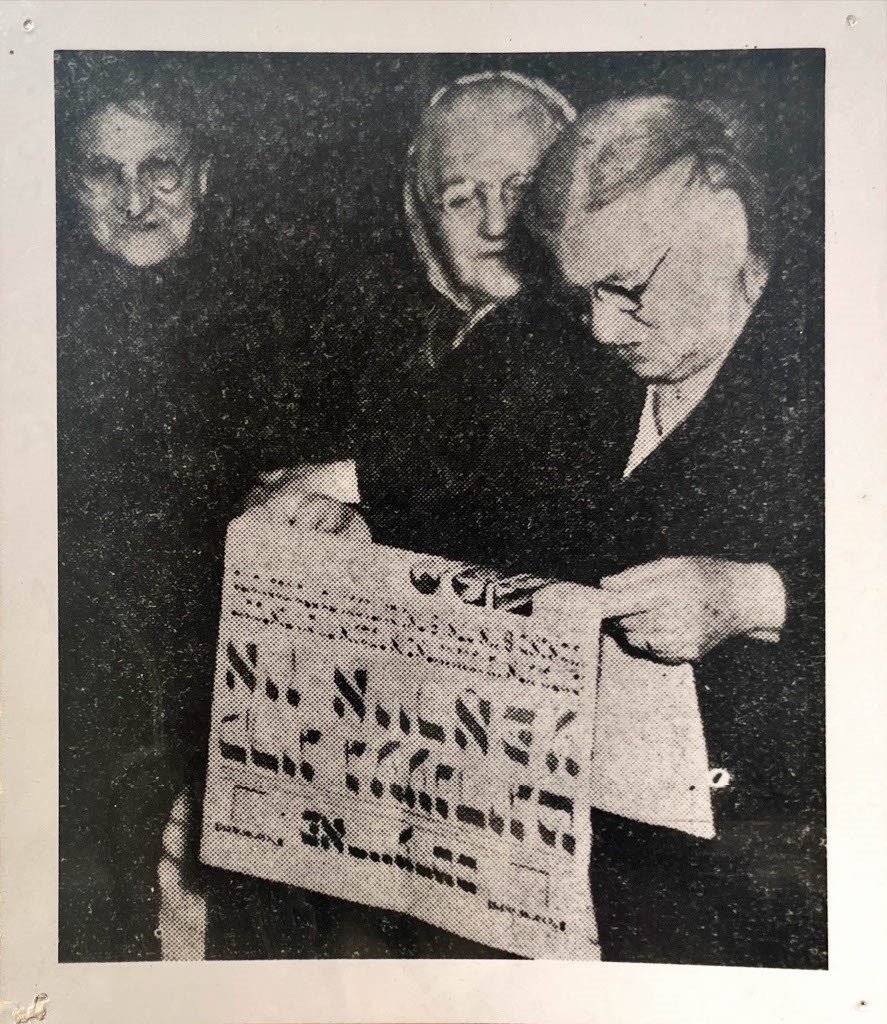
The effects of 20th century immigration restrictions, war, and linguistic assimilation were felt by Yiddish publications. As the use of Yiddish declined, papers had to creatively adapt. Some papers closed, while others became weeklies or merged. For example, in 1919 Der Tog absorbed Di Varhayt, and in 1928, Der Morgen Zhournal absorbed Yidishes Tageblatt. Eventually these combined to form Day-Morning Journal, which ceased publication in 1971.
There are still a handful of Yiddish newspapers in the U.S. today, primarily published within and for Haredi communities. The Forward established its English-language version as a weekly in 1990 alongside its Yiddish edition. Both are now digital publications. The New York Times occasionally publishes features relevant to local Haredi communities in both English and Yiddish [see below].




